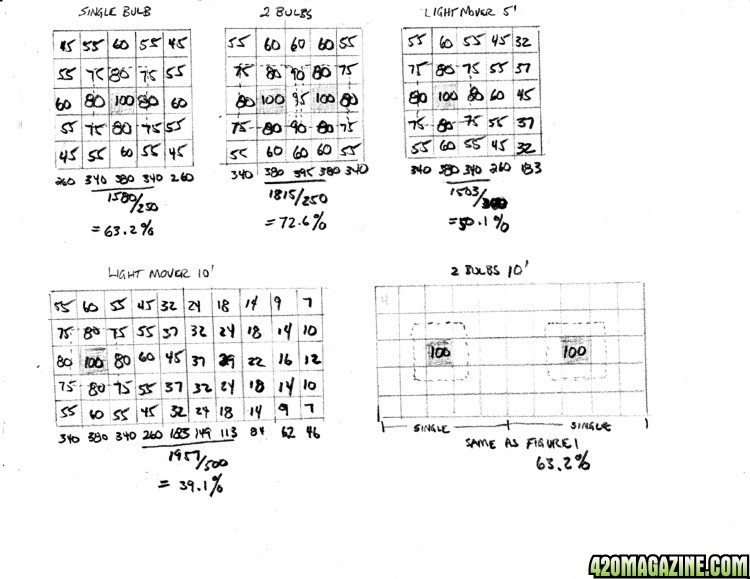I have prolly read every post on this forum and yet I still have a question, or at least I am looking for some opinions.
My question revolves around light/distance degradation between a 400 watt bulb and 1000 watt bulb. I use 2 400w hps and keep my top buds about 4" from the shade glass. A friend is using a 1000 watt for same area (5x4) and has to keep his plants about 1-1.5' away from glass.
Now we know light degrades at aprox 25% per foot. So at even one foot away he is getting 750watts of usable light to my 800. Also since his light is centered and this makes the farthest parts of the room at a greater distance than my 2 400's spread over a larger area, therefore reducing usable light even more.
So I beleive that 2 400's will give more usable light in an equal space as 1 1000w.
Thoughts? Ideas? Opinions?
Jonny
My question revolves around light/distance degradation between a 400 watt bulb and 1000 watt bulb. I use 2 400w hps and keep my top buds about 4" from the shade glass. A friend is using a 1000 watt for same area (5x4) and has to keep his plants about 1-1.5' away from glass.
Now we know light degrades at aprox 25% per foot. So at even one foot away he is getting 750watts of usable light to my 800. Also since his light is centered and this makes the farthest parts of the room at a greater distance than my 2 400's spread over a larger area, therefore reducing usable light even more.
So I beleive that 2 400's will give more usable light in an equal space as 1 1000w.
Thoughts? Ideas? Opinions?
Jonny







